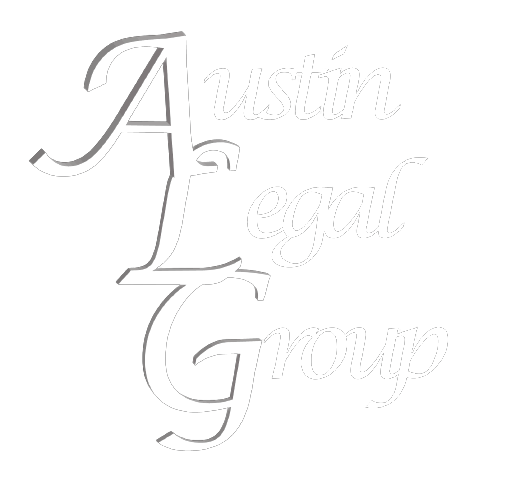In the intricate landscape of securities laws and regulations, few distinctions hold as much significance as the determination of affiliate status. This seemingly technical aspect plays a pivotal role in various facets of securities transactions, including the resale of shares, the type of offering being conducted, and even the issuer’s filer designation with the SEC. As such, it is important for companies and their management to understand what being an “affiliate” means in the context of federal securities laws, particularly with regards to rules, regulations, and forms under the Securities Act of 1933 (Securities Act) and the Securities Exchange Act of 1934 (Exchange Act). In this article, we’ll explore the practical significance of affiliate status, shedding light on its impact on securities market dynamics and regulatory compliance.
Securities Act Definition of Affiliate:
The Securities Act, a cornerstone of securities regulation, offers a statutory definition of an “affiliate” as a starting point. Rule 405 under the Securities Act defines an “affiliate” as follows: “An affiliate of, or person affiliated with, a specified person, is a person that directly, or indirectly through one or more intermediaries, controls or is controlled by, or is under common control with, the person specified.” This definition is mirrored in Rule 144, an important rule under the Securities Act. As discussed below, the distinction between affiliate and non-affiliate has important implications on a shareholder’s ability to liquidate their shares under Rule 144.
However, the exact determination of “control” or “common control” has triggered numerous judicial decisions, SEC no-action letters, comment letters and responses, and practitioner debates. Courts and the SEC consistently emphasize that the assessment of “control” hinges largely on the specific circumstances and factual context of a particular case. Therefore, a definitive criterion for establishing “control” has not been outlined, adding more complexity to the already complicated subject matter.
One clear indication of “control” is when an individual or group possesses a simple majority or more of the outstanding voting securities of a company. However, ownership of less than 51% can also signify control in certain situations. For example, a shareholder holding less than 50% of a company’s shares may still be deemed in “control” of the company if he has significant influence on the company’s operations, officers, directors, shareholders, or other stakeholders.
While executive officers and directors are generally considered control persons and affiliates of a company, simply being an officer or director does not automatically make a person an affiliate. Various cases have demonstrated that holding such positions is a factor, but not the sole determinant of control. The SEC itself has stated that status as an officer, director, or owner of 10% of the voting securities of a company is not necessarily determinative of whether such person is a control person or member of a controlling group.
Control stemming from informal relationships can be particularly challenging to discern. This can be based on familial, business, or even social ties. The SEC and courts maintain that individuals who collectively possess the ability to influence a company’s management or policies, directly or indirectly, are each considered control persons regardless of whether or not they hold shares of the company.
To assess “control” and, consequently, affiliation, one should consider the following factors:
- Share ownership, including comparisons with other ownership groups.
- Voting control, which also encompasses influencing other shareholder votes and acting as a group.
- The impact of re-sales or planned new issuances.
- The intent of a shareholder, as demonstrated by filing a Schedule 13G (passive investor) or 13D, including reported efforts to exercise control.
- Holding officer, director, key employee, or similar positions within the company.
- Familial or social ties with officers, directors, or key employees or shareholders.
- Substantial business relationships with the company, such as contributing to a significant portion of its revenues.
- Whether a person has sought to consult on management activities or exert control and the outcomes of such efforts.
- Debtor and credit relationships, particularly those granting major creditors the ability to foreclose on assets.
- Being an original incorporator or founder.
Resale Implications of Affiliate Status:
Understanding a shareholder’s “affiliate” status is crucial in navigating the complex laws regarding the resale of securities, such as:
Rule 144:
Rule 144, promulgated under Section 4(a)(1) of the Securities Act, is a safe harbor rule for the resale of securities. It allows sellers to resell their unregistered shares without being deemed underwriters if all Rule 144 conditions are met. Rule 144 is the most common safe harbor used to sell shares that had been restricted. For more information on Rule 144, see here. Rule 144’s conditions vary for “affiliates” and “non-affiliates”, as discussed below:
- Affiliates must ensure the company has current public information, adhere to volume limitations (e.g., selling no more than 1% of the issued and outstanding shares in any 90-day period), comply with manner of sale requirements (e.g., selling through a broker-dealer), and file a Form 144.
- Non-affiliates require current public information if selling after six months but before one year, but they are not subject to volume limitations, manner of sale requirements, or the filing of a Form 144.
Section 4(a)(1):
Section 4(a)(1) of the Securities Act provides an exemption for a transaction “by a person other than an issuer, underwriter, or dealer.” However, case law and the SEC unilaterally conclude that an affiliate of the issuer may not rely on Section 4(a)(1) for the resale of securities, making proper affiliate status determination crucial. In particular, an affiliate is presumptively deemed an underwriter unless such affiliate meets the requirements for use of Rule 144.
Section 4(a)(7):
The Fixing American’s Surface Transportation Act (FAST Act) introduced Section 4(a)(7), a new statutory exemption for private resales. This section effectively codifies many presumed requirements of the commonly-known Section 4(a)(1½) exemption. When an affiliate seller relies on Section 4(a)(7), they must provide the buyer with a statement acknowledging their affiliation and a certification that the issuer is not in violation of securities laws.
How Affiliation Affects Offerings:
When it comes to securities offerings, determining whether a selling person qualifies as an affiliate of the issuer is a critical consideration. This determination can shape the entire landscape of the offering process, as discussed below in further detail.
Form S-3 Eligibility:
Form S-3 registration statements provide significant benefits for exchange-traded companies, including forward incorporation by reference and shelf registration capabilities. Commonly referred as the baby shelf rule, under Instruction I.B of Form S-3, an issuer with $75 million or more in aggregate market value of its voting and non-voting common equity held by non-affiliates, which is commonly referred to as the issuer’s “public float,” may use a Form S-3 registration statement to conduct a primary offering of securities for cash. An issuer with less than $75 million in public float may only utilize Form S-3 if certain other conditions are met, including offering no more than one-third (1/3) of the non-affiliate float. Properly assessing affiliate status is critical for calculating non-affiliate float and determining S-3 eligibility.
Categorization of Offerings:
Generally, when speaking of offerings, an offering is categorized as either a primary offering or a secondary offering. Primary offerings typically involve the company selling securities to investors directly. Secondary offerings, on the other hand, involve the sale of shares by bona fide selling shareholders, not by the company itself, and it can only take place after a company has gone public.
Another type of offering known, as an “indirect primary offering,” occurs when the seller isn’t the company but the offering is still treated as a primary offering. This can happen when sellers are affiliates as defined by Rule 405, the offering is the initial sale of company securities to the public, or the offering size is substantial compared to existing securities. Determining whether an offering is an indirect primary offering involves assessing the facts and circumstances, similar to determining affiliation. The SEC provides guidance through comments and disclosure interpretations (C&DI’s), taking into account factors like the selling shareholders’ relationship with the issuer, the shareholding duration, and the seller’s role in underwriting. The SEC considers an offering as an indirect primary offering if more than 1/3 of the outstanding public float is being registered at once, making it ineligible for secondary offering treatment.
Affiliate Status as the Determining Factor:
The determination of whether an offering is primary, indirect primary, or secondary hinges on whether it’s being made by the registrant, on behalf of the registrant, or by third-party selling shareholders. The determination of what category an offering belongs to is not as simple as looking at the registration statement’s face though. For example, even if a company initially goes public through a direct listing with a resale registration statement, that statement is treated as a primary offering.
Securities Act Rule 415 specifically provides that an offering “by or on behalf of… the registrant, a subsidiary of the registrant or a person of which the registrant is a subsidiary” is a primary offering not eligible for at-the-market pricing unless registered on Forms S-3 or F-3, and for which the sellers must be named underwriters. Rule 415 doesn’t explicitly include the term “affiliate.” However, if a selling shareholder qualifies as an affiliate, as defined in Rule 405, the SEC may consider them an alter ego of the company, thereby rendering them ineligible for secondary offerings.
If a selling shareholder participating in the offering is determined to be an affiliate of the company, and thus the offering is considered a primary offering, such determination can have far-reaching consequences, such as:
- Pricing Flexibility: Primary offerings must be at a fixed price unless using Form S-3 or F-3, in which case the offering can have flexible pricing. Secondary offerings on all forms can have flexible pricing.
- Underwriter Liability: Sellers in primary offerings or indirect primary offerings must be named as “underwriters” in the registration statement, incurring Section 11 liability under the Securities Act.
- Continuous or Delayed Offerings: Primary offerings on a continuous or delayed basis must be at a fixed price unless registered on Forms S-3 or F-3. Secondary offerings can be made on a continuous or delayed basis regardless of the form used.
Exchange Act Definition of Affiliate:
The Exchange Act Rule 12b-2 aligns its definition of an affiliate with that of the Securities Act, emphasizing control or common control with a specified person. Specifically, it states that an affiliate is, “a person that directly, or indirectly through one or more intermediaries, controls, or is controlled by, or is under common control with [the issuer].” This determination is consistent between the Exchange Act and the Securities Act, ensuring uniformity in regulation.
Determining Filer Status:
Public companies with securities registered under Section 12 or subject to Section 15(d) of the Exchange Act must comply with SEC reporting requirements. The degree and timing of disclosure vary based on the company’s size. A company’s size is determined, in part, by how much non-affiliate-held equity is issued. Categories of filers include:
- Large Accelerated Filer: These companies meet specific criteria by the end of their fiscal year, including a worldwide market value of non-affiliate-held common equity of $700 million or more. Notably, a large accelerated filer can be re-categorized if it subsequently has significantly less non-affiliate-held common equity market value.
- Accelerated Filer: Accelerated filers have a worldwide market value of non-affiliate-held common equity between $75 million and $700 million. Like large accelerated filers, an accelerated filer can be re-categorized if its non-affiliate-held common equity market value changes.
- Smaller Reporting Company (SRC): SRCs are defined by factors such as having a market value of non-affiliate-held common equity of less than $250 million or annual revenues of less than $100 million. SRC status can be determined when filing a registration statement and involves public float calculations.
- Non-Accelerated Filer: This category, though referred to in rules and statutes, is not explicitly defined in federal securities laws. Non-accelerated filers are essentially companies that do not fall into the large accelerated, accelerated, or SRC categories.
- Emerging Growth Company (EGC): EGC’s are identified by factors such as annual gross revenues of less than $1,235,000,000 in their most recent fiscal year. EGC’s enjoy benefits such as scaled disclosure requirements and exemption from compliance with Sarbanes-Oxley Act (SOX) Section 404(b). EGC status is lost when a company becomes a large accelerated filer.
Importance of Accurate Affiliation Determination:
Accurate affiliation determination has significant consequences, particularly concerning compliance with SOX Section 404(b). This section mandates external auditor attestation of internal control over financial reporting. Given the substantial costs associated with SOX Section 404(b) compliance, a precise understanding of reporting company categories, and thus affiliation, is crucial.
Fully understanding the Exchange Act’s definition of affiliate and its impact on determining the filing status of public companies is important for navigating the intricacies of filing requirements. Accurate affiliation assessment ensures that companies comply with the appropriate regulatory disclosure obligations and meet their reporting obligations efficiently. Discerning the nuances of these regulations can significantly benefit public companies and assist them in making informed decisions regarding their reporting obligations.
More Information
Austin Legal Group, APC (ALG) represents the legal interests of businesses and individuals across the country. The firm was founded on a desire to deliver excellent legal services in a personalized and economical manner. We represent public and private companies in a variety of corporate transactions including strategic planning, public offerings, private equity, debt offerings, mergers and acquisitions, and other general corporate services. Our clients include companies from various sectors, including: technology, health and wellness, agriculture, real estate development, manufacturing, cannabis, renewable energy and digital assets/crypto currencies. For more information or to schedule a consultation, please call our office at (619) 924-9600 and ask to speak with one of our attorneys.
Disclaimer
ALG does not make any representations or warranties, expressed or implied, as to the accuracy, completeness or fitness for a particular purpose of this or any article. This article is meant for general informational purposes only and should not be construed as, and does not constitute, legal advice. No one should take any action regarding the information in this article without first seeking the advice of an attorney. This article does not create an attorney-client relationship. No attorney-client relationship will exist with ALG or any attorney affiliated with it unless a written contract is signed by all parties and any conditions in such contract are satisfied.




